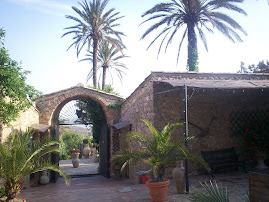
The olive grove of castello di Cafaggio
In Tuscany most olives are picked by hand. The flavour of Tuscan oil is fuller than the delicate Ligurian oil and lighter and more peppery than the southern ones. It is usually a rich green colour.
The first use for the new oil (extra-virgin cold-pressed and unfiltered) is called fettunta. It is simply drizzled over thick slices of local bread, and eaten at once by the workers at the frantoio or olive press. One characteristic Tuscan bread is called schiacciata because it is squashed or flat. Schiacciata can be sweet or savoury. The sweet variety is a sort of grape foccaccia. It is a typical autumn food because it uses the grapes which are ready from September onwards.
The second use for olive oil is for Bruschetta and is now eaten all over the world. This is a simple antipasto served before family meals in Florence or anywhere in Tuscany
.
BRUSCHETTA RECIPE
6 slices of thick Italian bread, preferably a day old.
Garlic
Extra Virgin Olive oil
3 sun-ripened Tomatoes roughly chopped
Basil
Grill the bread on both sides & rub with the garlic. Pile the tomatoes onto each slice, top with basil and drizzle with oil. Serve immediately.


























